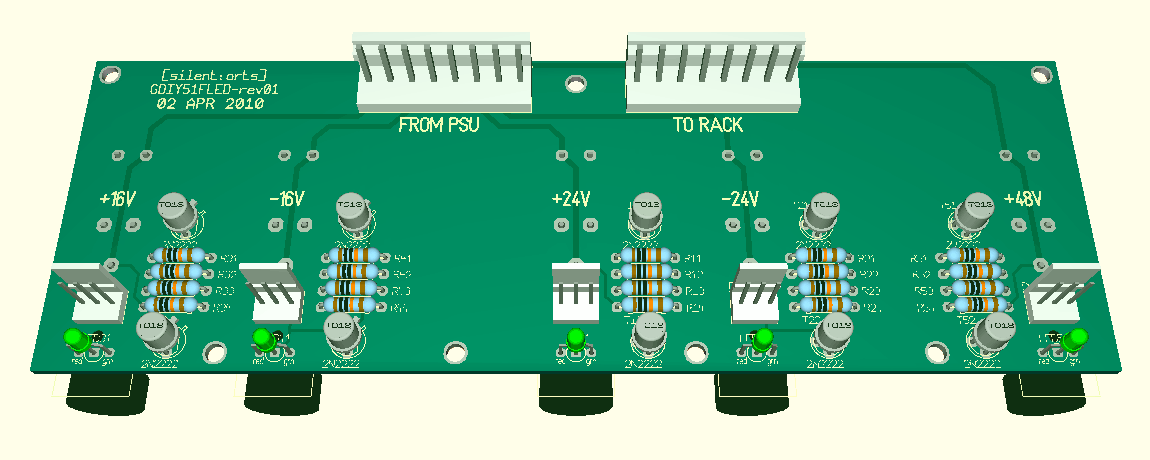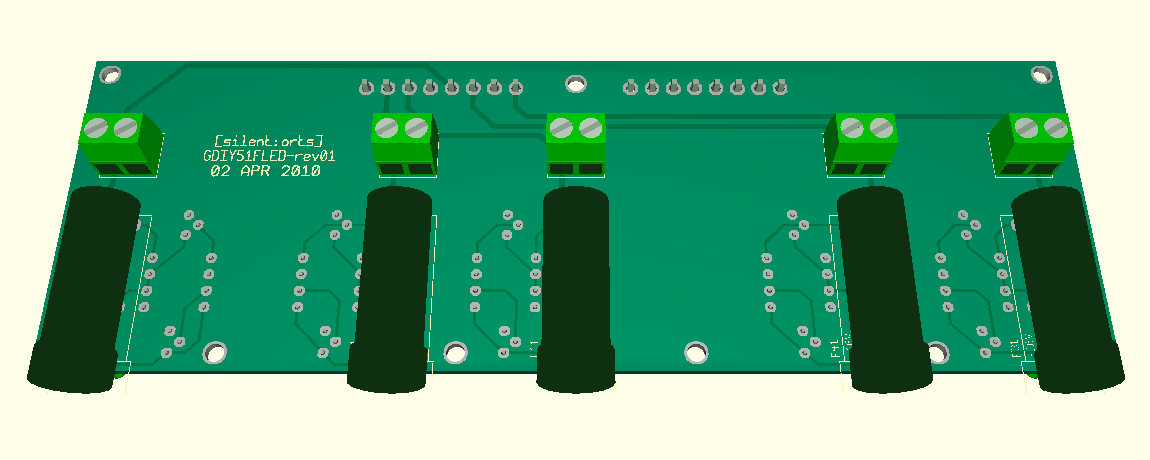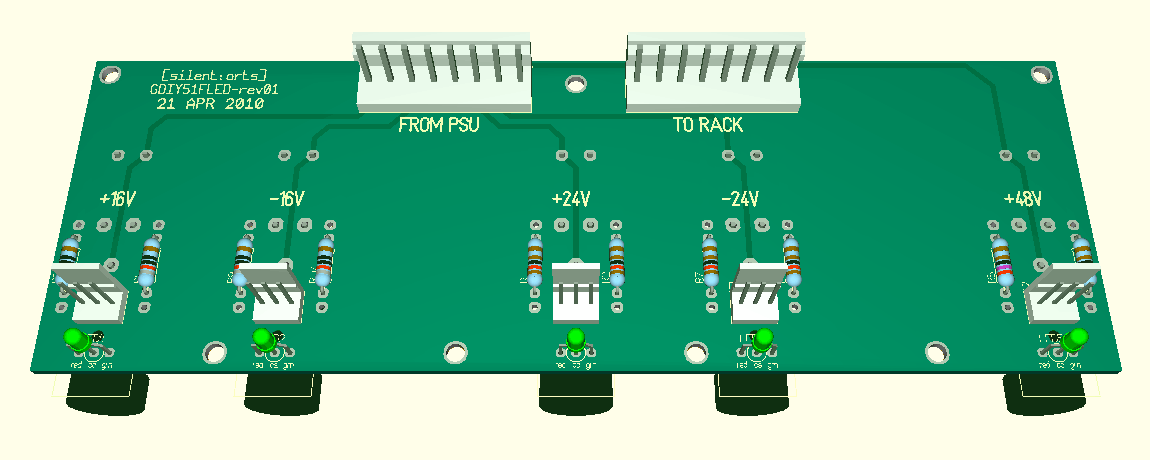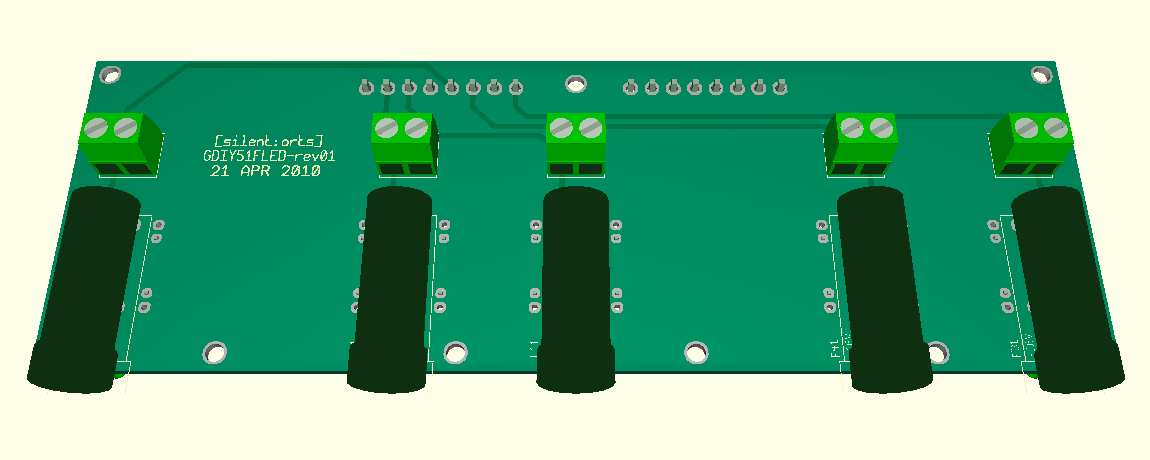(Haven't had my morning coffee yet, so I might be making my point somewhat stronger than I normally would).
jsteiger said:
[...] Right at the limit of the LM317, well within the spec of a LM350 and right at what PSU will deliver. [...]
That's not the point (or: not my point).
At the risk of being a nag: with the transformers you're selling(/speccing) you run into thermal limits before hitting current limits, even on the LM317. National's data sheet for the parts shows that the minimum guaranteed current limit is also temperature-dependent, this factors into the equation.
(Also: the way the board is laid out, with the regs relatively close together, means that the effectiveness of any heat sink will be reduced)
jsteiger said:
I'm not saying that I am gonna do this or that anyone else should do this but you can bet that someone will. Not to mention that there is no draw on the 24V rails in that example. It is highly possible that some educated user will have 11 modules in one rack running on only the 16V rails and 11 modules in another rack running on only the 24V rails. I think it is all really user and gear dependent. I suppose it is also pretty wise to do a few measurements before overloading a PSU and melting some silicon. ;D
From my POV it makes no sense at all. I know that I may have a rep for looking for more robustness than would fit the 'DIY spirit', but this is a no-brainer. The PSU parts and board are
so cheap, cheaper even than a second power cable+connectors would be if you use the parts Sahib specified. Temperature's also a factor: two boards will run cooler than one, increasing the life of your silicon and nearby capacitors.
I'm sure there are specific situations where it would work, and if I were building a few thousand to be deployed in airport lounges (or any other temperature-controlled environment) I might consider it for cost reasons. But for DIY@qty1? If you value your time at more than McD rates, even doing "a few measurements" will very soon approach the cost of the extra board you're trying to eliminate.
Finally, it's cheap insurance. It eliminates nasty surprises. Maybe it'll work today with two racks full of VP26es. Maybe next year you'll fall in love with a batch of custom 2520 clones that just happen to draw a bit more current. You try it in one pre, works fine, sounds heavenly. You replace all of them, and you start getting intermittent faults. It works fine in winter but cuts out in summer. It works OK by itself but starts acting wonky if the adjacent PM670 is powered at the same time. Those are
fun faults to chase after.
dandeurloo said:
Ok, so when you guys who are much smarter then I am figure this out, I will put in either the LM317 or get 350's?
If it were my rack I'd use the LM317s. There's little to no technical justification for using the LM350s.
JDB.
[but like I said before: I am neither selling nor offering tech support for these boards, and those who are/do should act as they see fit]



























